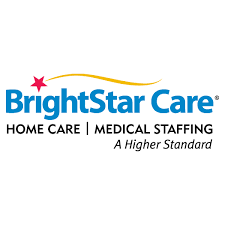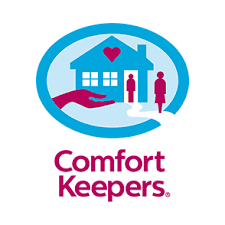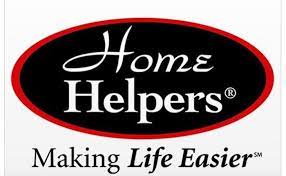Healthcare Industry: BrightStar Franchisees Business Is Threatened
BrightStar franchisees are challenging industry shifts that threaten their businesses. Join Mark Woodsum, a seasoned franchisee and president of the BrightStar Owners Association, as he reveals insights on growth, leadership, and the ongoing battle to protect franchisee rights.
Table of Contents:
Introduction
Patrick: Hey, you have Patrick Findaro here, co-founder at Vetted Biz. Very excited to have on Mark Woodsum, who’s a franchisee of BrightStar. His franchise alone has over 300 employees across Orange County. We’re going to talk a bit about how he got into the BrightStar system, how he’s grown his business, as well as changes that have been happening at the BrightStar organization that has prompted him to go head-to-head with his organization against the franchise brand to fight for the rights of his operation, as well as hundreds of franchisees in the BrightStar organization.
So stay tuned as we jump into Mark’s background, his experience acquiring a BrightStar franchise and growing it, as well as what the latest status is with his franchise organization, his franchise association, I should say. Mark, thanks so much for joining today.
Mark: Patrick, thanks for having me on. And just to add to what you said, I’m also the president of the BrightStar Owners Association of over 200 owners here and across the country. And I actually own four franchises here in Orange County, California.
P: And it’s credible. You acquired, what, the first one back in 2015?
M: Yes.
Healthcare business
P: And it was mostly home care, not as many employees?
M: Yes, it was quite a bit smaller. We did about 90% of our business back when I started out was doing almost all home healthcare. And now that’s about a third of our business. And now another third of it is staffing for other companies with the labor shortage. And another third of it is what we call the skilled business, which is LVNs and RNs. We do a lot of clinical trials. In fact, we did the clinical trials for Johnson Johnson to develop their COVID vaccination.
P: Compared to some of the other franchises in the space, like Home Helpers, Comfort Keepers, I believe, they’re more really just focused on one side of the business, where it’s just home health? And it looks like BrightStar is doing a lot of different activities for the senior population?
M: Right. The vast majority, and I don’t know the percentage, but it’s 80% I believe, or more, just do what’s called companion and personal care, taking care of, and mostly elder care. We also do a lot of childcare, which people don’t realize, and pediatric care.
Mark’s career
P: And what were you doing before you acquired your first BrightStar franchise, and now you’ve grown it to four territories, prior to 2015?
M: Well, believe it or not, my career was in government service. I started off in the military. I was in the Rangers, and I did counterterrorist stuff. And I was actually the commander of a Nuclear Emergency Search Team, a NEST team, right in San Diego. And then after that, went into the Foreign Service, and I was a diplomat with the State Department for many years. And then when I got out of the Foreign Service, I moved back. I always wanted to get back to California. Loved being in California when I was there as a NEST commander, moved back out here, and I’d had another company that I owned for a while before selling it and buying this company.
What’s interesting about the healthcare industry?
P: Very cool. And what piqued your interest about going in this industry rather than other… were you first convinced on the industry, or were you first convinced on the franchise business model, before you decided to get into BrightStar?
M: First convinced on the industry. What I love about it is, I have an MBA, so a strong business background, but I also have a vocational interest. Later in life, I was also, believe it or not, after getting out of the Foreign Service, I became ordained as an Episcopal priest. I have, then, a strong interest in working with the elderly. I actually have a foundation in working with end-of-life, and hospice, and things like that. That was sort of my post-Foreign Service career. So, the combination of having that vocational interest and having an MBA prompted me to want to put the two together. And so, this career does exactly that. Then, when I looked around, BrightStar had the best combination of doing the skilled business and the home healthcare. So it really made sense for me.
BrightStar organization
P: And can you tell me a bit about the organization of BrightStar? How it’s structured? Is it still run by the founder, or is it owned by outside private equity or a larger company?
M: It’s still run by the founder, Shelly Sun. She’s based just north of Chicago. And we’ve grown very rapidly, the company and individually. In fact, you asked about me. Our company, we’ve grown by an average of around 60% per year over the last four years, and quadrupled the size of the company since I bought it. So, there’s a lot of opportunity in this company, and home health in general is enormous, especially since COVID, is an enormous opportunity, where people want to stay out of hospitals. It is a dangerous place for an elderly person, because there’s a lot of bad things that can happen in hospitals. That’s why this industry has had a lot of acquisitions lately.
P: Well, yeah, and I’ve seen, and I’ve pulled up some of the stats of six recent BrightStars that have sold through SBA lending, and one sold for $300K, but you have a few that sold for over a million, including one with three territories at $4.2 million in 2020, and the owner was making about a million dollars in seller discretionary earnings. It seems like it’s a pretty profitable industry, with high top-line revenue, and pretty nice margins, but especially the top-line revenue seems pretty high.
Adding value to the business
M: Well, what I tell people is it’s a difficult business to get it off the ground, a lot harder than most. If you compare it to a lot of franchise, I use an example of Starbucks, where, once you get your doors open, people show up at your doors because you got great name recognition, and everybody wants their cup of coffee in the morning. Ours, the first couple years, it’s extremely tough. But once you get going, and once you get a certain scale, it’s a very nice business, and it can be pretty lucrative. A lot of it’s because you’re adding a lot of value. It’s a skilled business. It takes a lot of talent. And it’s value-added in economics. That’s where you do well. And we do add a lot of value.
Startup period
P: And would you say, you came in through an acquisition. Would you say even those first year, two years with acquiring an existing business was still quite hard, or was it nice to skip that startup period?
M: It’s absolutely a lot easier to skip the startup period. In places like Miami Beach, for example, a big city like that, it’s going to be a lot easier because you have a large population. Then, that’s going to be relatively easy, and you get a new operation, you got things in place. But if you start in a place where there’s no operation going on, generally, you got a couple of years where, and they say 18 months to two years, there’s sort of that dark time where we all go through it, where it can be pretty difficult. And that’s why one of the advantages of something like BrightStar is the owners.
As president of the owners’ association, the reason we have this association, more than anything, is owners helping owners. You really need that support network. And that’s one advantage of our franchise. We’re talking about franchises here today, and we help each other. If I’d done this on my own, it would’ve been much harder to do. And that, owners helping owners, is a big advantage. I did not have any background in healthcare at all.
I’ve been very successful, and a lot of it’s because I could always pick up the phone, or send out an email to other owners, and I got answers instantly to my questions.
Owners’ involvement
P: And out of these owners, do you have any that aren’t involved with the day-to-day operations, and they have a CEO, COO-type, or are most of the owners involved, working 40, 50 hours a week, plus?
M: Owners are very involved. I wish it was just 40 or 50 hours, I’ve got that in by about Tuesday. It’s a long week. Owners generally fill one or two roles…well, one of three roles. Either they have a great sales background, or a great operational/finance background, or some of them are actually nurses, and they do the clinical side of the business. Those are sort of the three hats. You’ve got to wear one of those hats to run one of these businesses.
Costs of starting a franchise from zero
P: And if you’re looking to start a BrightStar from zero, including the working capital for those first 12 months, 18 months, would you say $150k, $200k, or even more?
M: Well, they say $150k, $200k. But to be honest with you, it’s like any business. This is another one of those economics 101 things, where you always want, they always say have twice what they tell you. But you got to have enough money, because the difference is, if you have that $150k to $200k, you’re always bootstrapping it, and you’re always on the edge. But if you have $200k to $300k, then you got that extra cushion to make it work.
I had the extra money, and I was more successful than other people. The company, even though I had a company that was in business, it wasn’t run very well, so mine was a turnaround. It was actually losing money, things like that. It was still much better than a startup, but it was a turnaround. Now, it only took me a year to turn around, because it was there and had the fundamentals. It just needed to do some structural things.
Finding out about the franchise opportunity
P: And how did you find out about the opportunity? Did you work through a business broker, or was it, you identified the franchise first and they said there was a resale?
M: Yeah, I identified the franchise. I looked at them, and I quickly, because my business background was able to identify that BrightStar was the one for me, contacted them. And then I worked with them to identify a few options, and they helped me find Orange County. Actually, I was living in San Diego at the time, so it was a lot easier moving to Orange County than, no offense against Miami, Patrick, but Orange County was a lot closer than Miami. And I really didn’t want to relocate my family 3000 miles, so Orange County made a lot of sense.
P: Nice. Well, there’s both great places to live. Probably a little better weather here in the winter, and then your summer better weather.
M: Yeah. Both great spots. I think, isn’t there an Orange County probably out in Florida too, my guess.
P: Exactly. Near Orlando, we have our own Orange County.
M: It worked very well. And I actually commuted, didn’t even have to move. I actually commuted for the first couple of years. It was a pretty long commute, but it worked well.
Hours invested in the business
P: Then, those first couple years, you were putting in serious hours, I imagine. Including the commute, 70, 80?
M: Yeah. It was a lot of hours. I was driving three hours round trip every day, but it worked well. And then I knew it was going to work. Before I relocated, I knew it was going to work. But Orange County’s, we’ve got places that are world famous. Newport Beach is in our territory. You can imagine, having an affluent place like that, Laguna Beach, and places like that. And we have Irvine, which is sort of the Silicon Valley of Southern California. So they’re great places for, in terms of the population, and there’s a lot of affluence and stuff, so it’s a great place to run a business.
President of the franchisee association
P: And how did you get involved in and become the president of the franchisee association?
M: I’m now the third president of it… It’s a lot of work. And, when you’re already working a ton of hours a week, nobody wants it. One of the challenges you have in these associations, we have committees and things, nobody wants to take on more work. When we have certain committees and stuff, and you ask somebody to raise their hand, everyone takes one step backwards. It’s hard to get volunteers.
The guy that was running it, it was time for him to step down, so he asked me, and I said no at least four times before I finally said, “Okay, I’ll do it.” But it was just one of those things where we have four or five owners throughout the country who have stepped up and taken on certain committees, and they’re terrific. And those owners, it’s a thankless job, but we need owners to do it.
We also have three, four committees where you keep going to the same sort of owners all the time, but hopefully more and more will do that. But we really need to have owners united in working together and committing the time. So, I did my thing. I’ve been doing it for about a year and a half now. I’ll do it for probably another six months or so, do a couple of years. Then, hopefully, I’ll be able to find somebody to step up and do it for another couple of years.
Differences between franchise association and franchise advisory council
P: For those that are not familiar, what’s the difference between a franchisee association and a franchise advisory council?
M: We have a Franchise Advisory Council. That’s another thing that’s hard to get owners on. It’s a nice organization, but it’s run primarily by the franchisee…franchisor, I should say, sort of manages that council, and they advise. But they don’t have the same level of authority, in that the franchisor can take the advice or not take the advice, and they sort of manage the agenda, things like that. But the owners association, that’s run by the owners. We, the franchisees, set the agenda, we set the tone, that’s our organization. And so that’s where our strength comes from, as you can imagine.
It’s just like anything. If I have 300 employees, if they all show up tomorrow and say, “I want a dollar an hour raise,” okay, great. What am I going to do? Hopefully, they’ll be reasonable. But a united workforce, or united franchisees, is a powerful thing. That power has to be used thoughtfully, though. We aren’t trying to be unreasonable about anything.
They’ve done studies and, believe it or not, the franchise associations that have strong owner associations are better franchises. We do, for example, monthly best practice calls. We try to, we have an annual conference coming up next month. We’re going to do some breakout sessions. We’re going to do a best practice session at lunch. Our job is to do things that help the…you know, we have the same thing in mind.
P: I guess the franchisor is more concerned with increasing top-line revenue?
M: Right.
P: Where franchise owners want to increase what they put in their pocket. Or at least pay down their debt, etc. So, the earnings from the business.
Continue watching this interview on our Youtube Channel.





